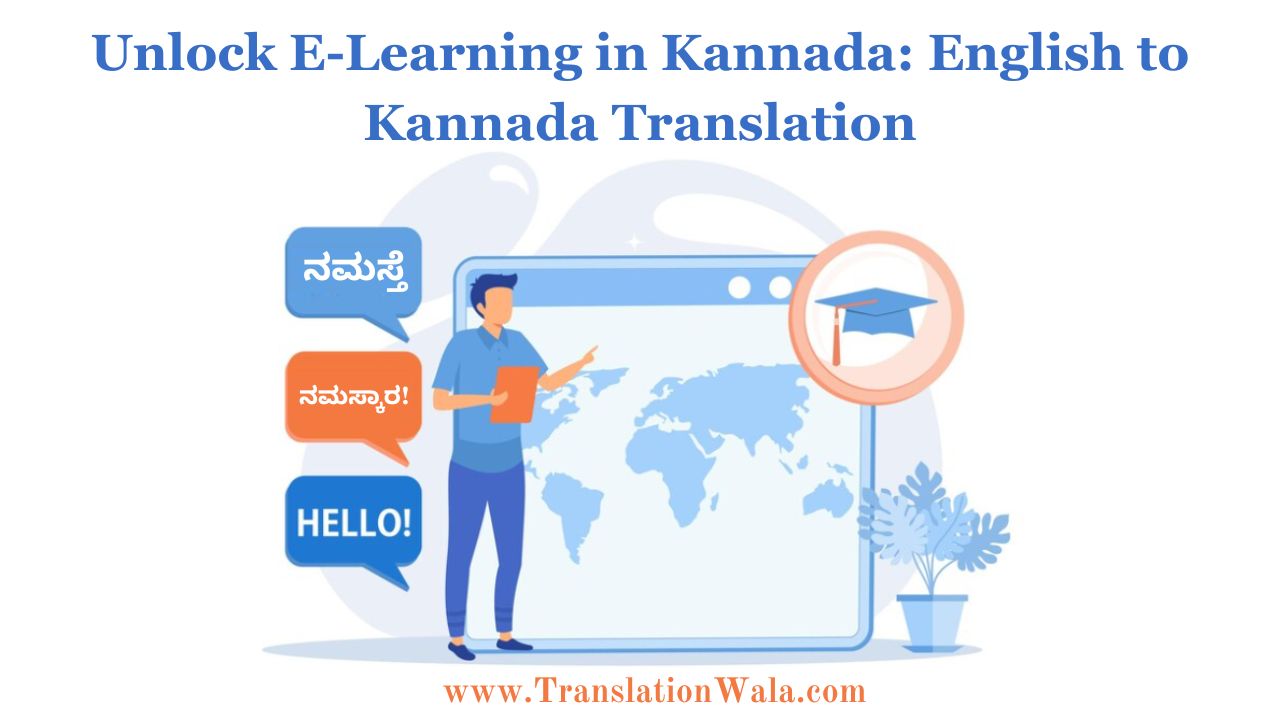Language is often a big problem in the huge world of online learning, which has the ability to make information available to everyone and give people more power. Millions of people who don’t know English can’t get to the rich trove of e-learning materials because of language barriers. This problem is even worse in India, where Kannada is the fifth most common language. Luckily, the development of advanced technology for English to Kannada Translation opens up e-learning to people who know Kannada.
The Demand for Kannada E-Learning:
The e-learning business in India is growing quickly and is expected to hit an amazing $10.1 billion by 2025. However, a big part of the people is still left out because most of the material is in English, especially in rural places. They can’t get a good education in their original language, which makes it harder for them to learn new skills and compete in the international job market.
This is a problem for Kannada users in many areas of e-learning. The majority of material is only available in English. This includes professional classes in IT, healthcare, and business, as well as academic tools for high school and college students. This is very bad for people who know Kannada because it makes it harder for them to get useful information and opportunities.
Also Read: Exploring the Nuances of Bengali: A Guide to Effective English to Bengali Translation
Bridging the Gap: English to Kannada Translation Technology:
Advanced machine translation (MT) has made it possible to connect people who speak different languages. In the past few years, tools for translating from English to Kannada have improved a lot, making the translations more accurate and detailed than ever. These tools use deep learning algorithms and huge amounts of translated text to understand the context and subtleties of both languages. This makes the translations sound real.
When these language tools are added to e-learning sites, they can change the game. Platforms can let users convert course materials, articles, and videos whenever they want, so Kannada people can access them without losing any of the quality or content. This lets people learn in the language they prefer, which makes it easier to understand and more fun to do.
Benefits of E-Learning in Kannada:
Unlocking e-learning in Kannada could have a lot of positive effects. Here are a few important pros:
- Improved learning outcomes: It has been shown that people learn better when they can understand what is being taught in their own language. We can help students and workers learn better by giving them access to e-learning tools in Kannada.
- Increased accessibility: E-learning is great for people who don’t have a lot of time or access to standard schooling because it is flexible and easy to use. Many more Kannada users will be able to use e-learning if the language hurdle is taken away.
- Bridging the digital divide: You can help close the digital divide between towns and rural areas by using e-learning. We can help people and groups in rural places join the digital economy by making tools available in Kannada.
- Preserving and promoting Kannada language: E-learning Kannada can help keep the language alive and spread it to more people. We can make Kannada more popular in the digital world by giving people a place to make and share content in the language.
Also Read: Ensuring Cultural Sensitivity: Tips for Effective English to Gujarati Translation
Challenges and Opportunities:
There are still some problems that need to be fixed before English to Kannada translation can be used for e-learning. MT tools aren’t always accurate, especially when it comes to technical and specific areas. Also, cultural and language details might get lost in translation, so quality control needs to be done by a person.
With all of these issues, there are still a lot of options. E-learning platforms, translation service providers, and language experts can work together to make translation tools that are accurate and strong enough to use with e-learning materials. The rise of this industry can also be helped by projects like making e-learning materials in Kannada and building a group of people who make content in Kannada.
Conclusion:
Unlocking e-learning in Kannada through English to Kannada translation has the potential to change the way people get information and give millions of people more power. Language won’t stop people from learning and growing in the future if we use technology to its full potential and work together as a group. As we move forward, let’s see what e-learning in Kannada can do for us and work together to make sure everyone can learn, grow, and do well in their own language.
